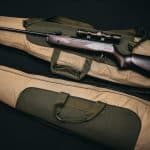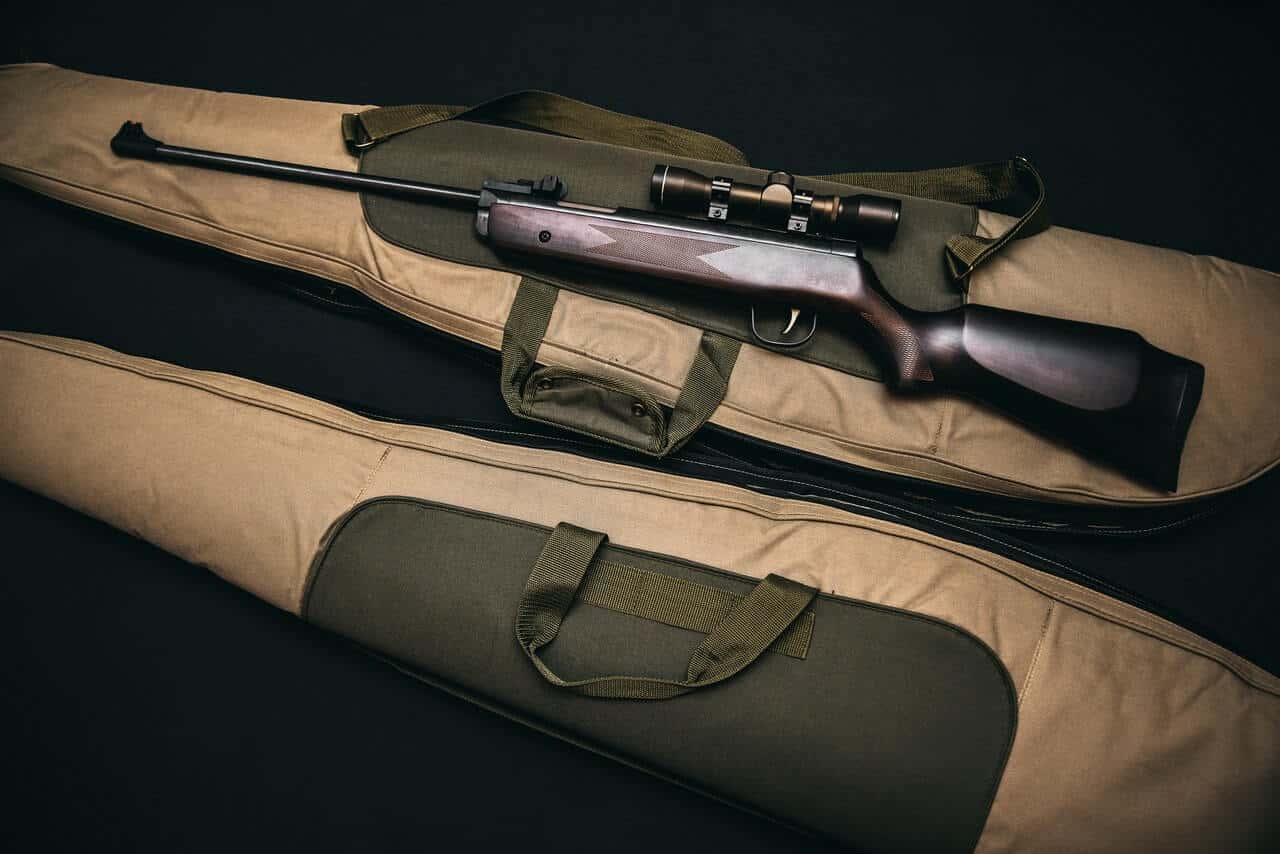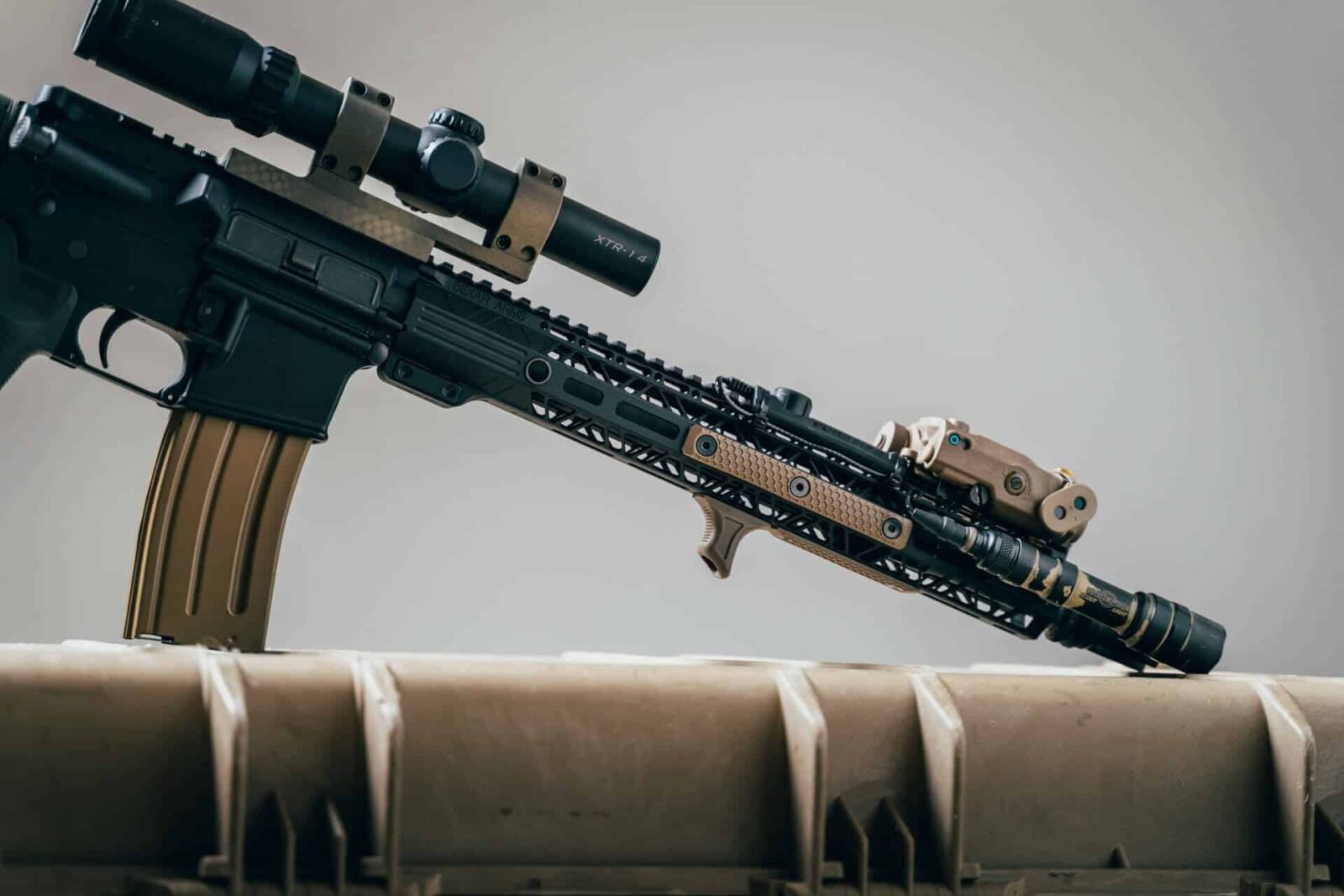Whether you are new to firearms or a seasoned veteran, at some point you will have asked yourself this question.
Can a rifle scope be mounted too high? The answer is yes, it can be. However, there are a few caveats to it.
- Raising your rifle scope too high can keep you from acquiring your target.
- Mounting the scope too high can also result in having to raise your head up higher. This entity will cause you to become unsteady and lose sight of your target.
- Moreover, the recoil from the rifle can also cause the scope to move erratically if it is mounted too high on the gun.
For these reasons, it is important to mount your rifle scope at the correct height so that you can fire accurately and maintain stability while shooting. In this blog post, we will discuss the consequences of mounting your rifle scope too high and how to avoid them.
How High Should Your Scope Be Above The Barrel?
If you’re sighted in at 100 yards, and the average height of a deer’s shoulder is 3.5 feet, your line of sight should be about 3.5 inches above the centerline of the scope. But most scopes are mounted about 2 to 3 inches above the centerline of the barrel. So if you’re sighting in at 100 yards, you’re actually sighting in closer to 97 yards.
The reason is that when you’re looking through a scope, you’re looking down the length of the scope tube, which puts the crosshairs slightly below your line of sight. So when you account for the height of the scope above the centerline of the barrel, you end up with a point of impact that’s a few yards closer than your point of aim.
This is why it’s important to know the exact height of your scope above the centerline of the barrel. This entity will make the necessary adjustments when sighting in at 100 yards.
The best way to do this is to measure the distance from the centerline of the scope tube to the centerline of the barrel. You can then add that to the scope’s advertised magnification.
For example, if you have a 3-9×40 scope, and you measure the distance from the centerline of the scope tube to the centerline of the barrel to be 1.5 inches, then your scope is actually 4.5x (1.5 + 3).
Now, let’s say you’re sighting in at 100 yards with a rifle that has a scope that’s 4.5x. If you hold your crosshairs on the center of a deer’s shoulder, and the deer is 300 yards away, your bullet will impact about 3 inches below the center of the shoulder.
Adjust your scope so that the bullet hits where you’re aiming. This will ensure that your rifle is zeroed in at 300 yards.
Is It Best To Mount The Scope As Low As Possible?
When it comes to mounting a scope, there are a few things to keep in mind. First and foremost, the goal is to get the reticle aligned with your eye. This can be accomplished by mounting the scope as low as possible, which will help to reduce the amount of parallax error.
Besides that, make sure that the scope is mounted securely. This will help to prevent the optics from shifting during firing, which can lead to inaccuracy.
You need to consider the weight of the scope when choosing a mount. A heavier scope will require a sturdier mount, which may add some bulk to your setup. Ultimately, it is up to you to weigh all of these factors and decide what is best for your needs.
Does A Rifle Scope Have To Be Level?
There are a lot of different opinions out there on whether or not a rifle scope has to be level. The main reason why people believe that a scope doesn’t have to be level is that they think that the reticle, or crosshair, will be off-center if the scope is not level. However, this is not the case.
The reticle is actually designed to be off-center so that it can be used for making precision shots. The reason why the reticle is off-center is that it is placed in the first focal plane of the scope. This means that the reticle will appear to move when the magnification of the scope is changed.
So, even if the scope is not level, the reticle will still be in the same place in relation to the target. Therefore, it is not necessary to level a rifle scope in order to make accurate shots.
How Much Scope Clearance Is Too Much?
When it comes to scope clearance, there is such a thing as too much. If your scope is too high off the rail, it can result in a loss of zero and an irregular point of impact. Moreover, a high scope can cause difficulty in loading and unloading the chamber, as well as problems with magazine changes.
On the other hand, a scope that is too low can also be problematic. A low scope can make it difficult to acquire and maintain a proper cheek weld, which can impact accuracy.
So how much scope clearance is too much?
As a general rule, you want your scope to be high enough that you can comfortably acquire and maintain a proper cheek weld. But it should be low enough that it does not obstruct your field of view or interfere with loading and unloading the chamber.
How Does Scope Ring Height Affect Accuracy?
When it comes to accuracy, there are a lot of factors that come into play. From the type of gun, you’re using to the ammunition you’re firing, every detail matters. One factor that is often overlooked is scope ring height.
Believe it or not, the height of your scope rings can have a big impact on accuracy. If the rings are too low, they can obstruct your field of view and make it difficult to line up a shot.
On the other hand, if the rings are too high, they can throw off your aim and cause you to miss your target. So how do you know what height is right for you? It really depends on the gun you’re using and your shooting style. Experiment with different heights to see what works best for you.
What To Keep In Mind When Choosing A Scope?
When it comes to choosing a scope, there are a few things you need to keep in mind.
Only you can decide what type of reticle you want. There are three main types of reticles: duplex, mil-dot, and crosshair. Each has its own advantages and disadvantages. You can choose the best fit for yourself according to the specifications.
Second, you need to consider the size of the objective lens. The larger the objective lens, the more light will be gathered, and the brighter the image will be. However, a large objective lens can also add significant weight to your setup.
Besides that, you need to decide what level of magnification you need. Higher magnification will allow you to see your target more clearly, but it can also make it more difficult to track a moving target.

Binos enthusiast since I was 12 – A real expert in all things optics including rifle scopes and red dots. Live in Dubai & love writing, beaches and eating!






